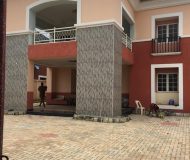
The Interplay of Mobility: How Transportation Impacts Real Estate Preferences
In the intricate realm of real estate, location has long been hailed as the paramount factor influencing property values. However, in recent years, the role of transportation has gained remarkable prominence. In today’s interconnected world, accessibility and convenience are pivotal considerations for both residential and commercial real estate. This article explores the profound impact of transportation on real estate choices, highlighting the symbiotic relationship between transportation infrastructure and property values.
- Accessibility and Property Valuation
Transportation profoundly shapes real estate through accessibility. Properties located in close proximity to well-developed transportation networks tend to command higher values. This is because easy access to transportation options like highways, public transit, and airports enhances a property’s appeal to prospective buyers or tenants.
For instance, properties within a short stroll of a subway station in a bustling metropolis often enjoy heightened demand and elevated price tags compared to those situated farther away. Similarly, residences near major highways offer effortless commutes, making them particularly appealing to busy professionals.
- Commuting Times and Quality of Life
Transportation also exerts a significant influence on individuals’ and families’ quality of life. Cumbersome and stressful commutes can be a substantial deterrent when selecting a place to call home. In locales with limited transportation alternatives, residents may find themselves allocating more time and resources to transportation, adversely affecting their overall quality of life.
This aspect becomes especially evident in urban areas where traffic congestion translates into extended commutes and diminished property values in regions with subpar transportation accessibility. Consequently, efficient transportation systems significantly contribute to residents’ quality of life, rendering properties in such areas highly coveted.
- The Emergence of Transit-Oriented Development
The concept of transit-oriented development (TOD) has gained considerable momentum in recent times. TOD revolves around crafting vibrant, mixed-use communities centered around transportation hubs such as train or subway stations. This approach emphasizes walkability, accessibility to public transportation, and the reduction of personal vehicle reliance.
TOD invariably bolsters property values by fostering an attractive and convenient living environment. Consequently, real estate located near these transit-oriented developments often appreciates in value as housing and commercial space demand escalates.
- Transportation’s Role in Commercial Real Estate
Transportation plays a pivotal role in the commercial real estate arena. Businesses actively seek locations offering easy transportation access for employees, customers, and suppliers. Retail establishments, for example, gravitate towards areas with high foot traffic and close proximity to major transportation arteries.
Likewise, logistics and distribution enterprises necessitate streamlined access to efficient transportation networks to facilitate the seamless movement of goods. Consequently, this has triggered heightened demand for industrial real estate situated in locations boasting well-established transportation infrastructure, such as ports, airports, and major highways.
- Forward-Looking Trends and Sustainable Mobility
Amid escalating concerns about climate change and sustainability, transportation choices are wielding increasing influence over real estate decisions. Sustainable transportation options, such as bicycle lanes, electric vehicle charging stations, and proximity to public transit, have evolved into selling points for both residential and commercial properties.
Real estate developers are acutely aware of the value of incorporating sustainable transportation elements into their projects. Buyers are also demonstrating a willingness to pay a premium for properties aligned with their environmental convictions. This trend is anticipated to persist as cities and regions continue to prioritize sustainability in their transportation planning endeavors.
Transportation and real estate are intricately interwoven, with transportation choices wielding a profound influence over property values, accessibility, and overall living standards. As urban landscapes and regions continue to evolve, transportation infrastructure and options will continue to mold the real estate landscape. Investors, developers, and buyers must factor in the transportation backdrop when navigating the real estate realm, recognizing that a well-connected and sustainable transportation system can infuse substantial value into a property. The symbiotic relationship between transportation and real estate remains a pivotal driver in the ever-evolving tapestry of property values and market dynamics.





